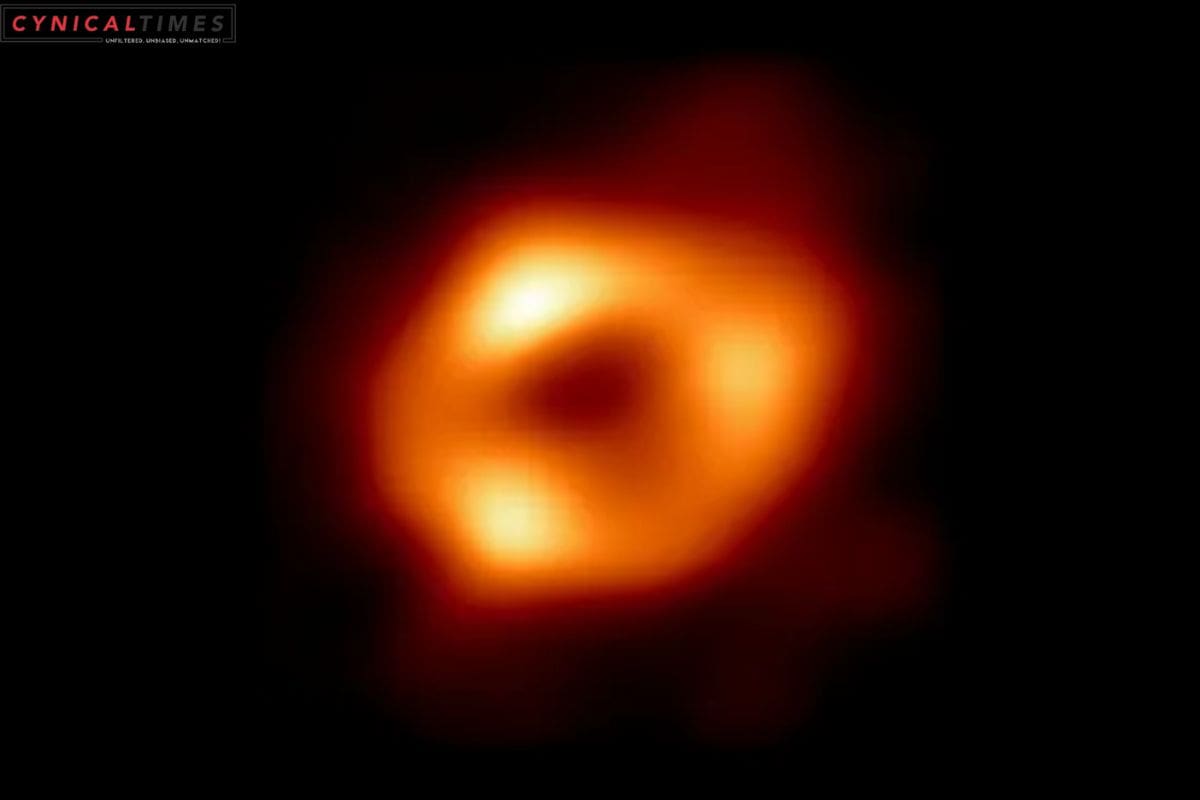Unveiling the Secrets of Sgr A : In the heart of our Milky Way galaxy lies a mysterious behemoth, a supermassive black hole known as Sagittarius A*. Astronomers have been aware of Sgr A*’s existence for some time, capturing a stunning image of it in 2022. However, precisely measuring its size and characteristics has posed a considerable challenge.
Recent findings from the Max Planck Institute for Extraterrestrial Physics (MPE) have shed new light on this cosmic enigma. A team of astronomers has, with remarkable precision, determined the mass and radius of Sgr A*.
To put it in astronomical perspective, Sgr A* tips the scales at a staggering 4.297 million times the mass of our Sun. What’s truly astounding is that it boasts a radius smaller than the orbit of Venus around the Sun. How did they uncover these dimensions? By scrutinizing the luminous gas swirling in the vicinity of this colossal void.


Also Read: Nanowire Networks Mimic Brain Learning – A Breakthrough in AI
Employing data from the near-infrared interferometer at the European Southern Observatory’s Very Large Telescope Interferometer (VLTI), these researchers tracked the electromagnetic emissions of the gaseous matter encircling the black hole. Their focus: the occasional flaresintense bursts of electromagnetic radiation that punctuate the cosmic dance around Sgr A*. These flares served as celestial breadcrumbs, enabling the astronomers to trace the intricate movements of the gas.
The team’s analysis encompassed flares observed in 2018, 2021, and 2022. This comprehensive dataset furnished them with a highly accurate measurement of the black hole’s mass. Importantly, this independent assessment harmonized with previous estimates, solidifying our understanding of Sgr A*’s dimensions.
Previous measurements primarily relied on the orbital paths of stars orbiting Sgr A*, yet there was a crucial disparity. The stars in question are significantly more distant from the black hole compared to the newly observed flares, making the previous assessments less reliable by comparison.


In the quest to gauge Sgr A*’s mass, the astronomers delved into the concept of “gravitational radii.” This parameter hinges on an object’s radial distance, and it must be proportional to the object’s mass. For Sgr A*, the gravitational radii denote the distance from the black hole’s center to its event horizonthe boundary marking the division between our universe and the enigmatic realm within the black hole. Beyond this threshold, even light succumbs to the immense gravitational pull of the black hole.
The gravitational radii measurement for Sgr A* unveiled a value of approximately 0.1 astronomical units, equivalent to a mere tenth of the distance between Earth and the Sun. While it may sound diminutive, it’s notably substantial. To put it into perspective, the gravitational radii of our Sun amount to around 3 kilometers (1.9 miles). It’s also worth noting that the Sun would need to be compressed to this size before it could transform into a black hole.
Diogo Ribeiro, responsible for the study’s theoretical modeling at the Max Planck Institute for Extraterrestrial Physics, emphasized, “The mass we derived from the flares, at just a few gravitational radii, aligns with the value derived from star orbits at several thousand gravitational radii. This strengthens the case for a solitary black hole reigning at the heart of our Milky Way.”


Excitement ripples through the scientific community as these measurements hold the potential to unlock insights into the formation of structures within the Galactic Center. Antonia Drescher, another key figure in the study, points to the intriguing behavior of the flares, noting their shared clockwise orbital motion, consistent radius, and similar orbital periods. It’s a remarkable synchrony.
The team’s aspirations extend beyond mass and radius. They aim to glean information about the black hole’s spin, a puzzle that continues to baffle scientists. As we delve deeper into the cosmos, Sgr A* stands as an astronomical marvel, revealing its secrets one flare at a time.
Our Reader’s Queries
How many Earths can fit in Sagittarius A?
Sagittarius A, the colossal black hole situated at the heart of the Milky Way, boasts a mass equivalent to a staggering 4 million suns. To put this into perspective, it could easily fit inside a mammoth sphere capable of accommodating several million Earths.
What is the biggest black hole discovered?
Abell 1201 has revealed the largest black hole ever discovered. The gravitational lensing signal is so strong that it has deflected the path of light significantly. This ultramassive black hole is estimated to be 33 billion times the mass of our Sun.
What is the closest black hole to Earth?
The European Space Agency’s (ESA) Gaia mission has uncovered two of the closest black holes to Earth. Dubbed Gaia BH1 and Gaia BH2, these black holes are located at distances of 1,560 and 3,800 light-years away from us, respectively. This exciting discovery was made possible thanks to the data collected by the Gaia spacecraft, which has been instrumental in advancing our understanding of the universe. With this new information, scientists can continue to explore the mysteries of black holes and their role in shaping the cosmos.
What is SGR A *? What evidence suggests that it contains a massive black hole?
At the heart of our galaxy lies Sgr A*, a powerful source of radio emissions. These emissions are primarily generated by charged particles that spiral within intense magnetic fields. By observing the movements of nearby stars and applying Kepler’s Third Law, we can deduce the presence of a black hole in this region (as depicted in Figure 19.20).

